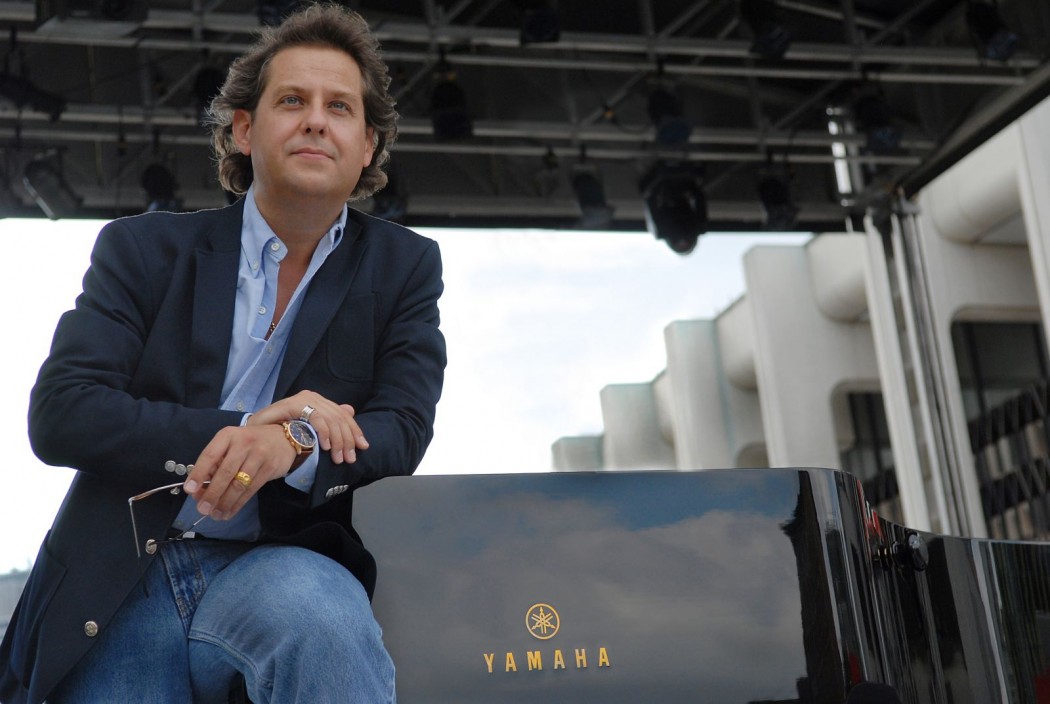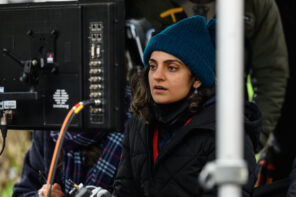St. Clair, Lefévre fail to set stage ablaze. Only just.
600 Town Center Drive, Costa Mesa, CA 92626
A warm night in December at Pacific Symphony.
Audience members found themselves physically moved to stand and—quite literally—bow at the feet of Pacific Symphony conductor Carl St. Clair, and guest pianist Alain Lefévre, these two pillars of classical music having just gone head to head in what can only be described as a “race to the finish” in Sergei Rachmaninoff’s Concerto in C Minor for Piano & Orchestra, Op. 18. Only just discernible under whipping grey hair and stoic grimaces, barely contained by the walls of the Renée and Henry Segerstrom Concert Hall, it becomes abundantly apparent why even the composer himself was hesitant to bring to life the fleeting melodies. The audience never knew what hit them.
The piece opens with the sound-off of pianistic toll bells, emoting a Baroquian choral harbinger that stands the tiny hairs of one’s nape. The orchestra quickly follows suit with a slow dressing of the stage, working in tandem with Lefévre to produce a melancholy warmth that will be the piece’s theme for the remainder of the next half hour or so. Soon, however, the players melt away, leaving Lefévre to produce a kinetic energy so frenetic that several patrons around me simultaneously find themselves on the edge of their seats, eyes closed, and drifting into a plane that one might heavily deduce only Lefévre could have orchestrated (no pun intended).
If the former half of the Concerto prompts you to entertain thoughts of taking up the Steinway, then the latter will have you dispelling such notions in a matter of microseconds. Many might remember the second and third movements of the Concerto from a number of films—including Spider-Man 3 (2007) and The Mirror Has Two Faces (1996)—but listening in-person, it’s a shame that one never gets to hear the dreamy escapades of a very conscious unconsciousness (reminiscent of Tchaikovsky-esque interludes) burst into its fiery ballads. Oscillating between the utilization of silence to concentrate his energy into forlorn etudes, and simply wrecking pandemonium on the Bavarian spruce keys in an act of hot ferociousness, Lefévre is more than electrifying. I might even suggest it was half luck that there weren’t any fire extinguishers nearby.
The Pacific Symphony, for its part, displays a formidable performance prior to the show-stopping Lefévre. Kicking off the concert is the world premiere of composer-in-residence Narong Prangcharoen’s Illuminating Journey. According to the program, the piece was conceived in part to celebrate St. Clair’s 25th Anniversary with the Pacific Symphony, and as an homage to the influence that St. Clair has had on his composing career. As a piece by itself, I felt its rapid back-&-forth, tempestuous nature, with elements of elegant Eastern mythological prose and melodic intervals a la West Side Story inscribed within its measures, was refreshing and enjoyable. However, aside from the detection of some minor key fluctuations with regards the first or second violins, there was a befuddling sense throughout that the piece lacks the thoroughfare and tenacity of a true tribute to the Maestro. Although perhaps not the most apt of adulations, it will be exciting to see where this stepping stone takes Prangcharoen into the future.
Reestablishing tribute and tradition, the Pacific Symphony follows up with Ludwig Van Beethoven’s Symphony No. 7 in A Major, Op. 92. Just in time for the piece’s 201st birthday, St. Clair notes that the piece was originally premiered and played for the benefit of soldiers wounded at the battle of Hanau, where, the program notes, Austrian and Bavarian troops attempted to cut off Napoleon’s army as it retreated from Leipzig. Tonight, the Pacific Symphony attributes the performance to the credit of U.S. troops both at home and abroad, as well as to those who have made the ultimate sacrifice.
First thing’s first: you know it’s going to be a wild ride when St. Clair is getting down on his haunches as if to take on the full weight of a professional linebacker. ‘Wild’ isn’t exactly the term one usually hears when talking about classical music, but there you have it. The orchestra belts out the opening notes as if to test the might of their commander-in-chief, St. Clair taking it all in stride, maneuvering the players into a languid revolution of ascending notes that denote the long introduction’s bread and butter.
The Symphony’s second movement finds its place in the expressionism displayed by its players, notably Principal cellist Timothy Landauer, whose bow finds a monstrous temperament in growling whiplashes and gritted teeth. The ever-enjoyable Raymond Kobler, Concertmaster, also delights with a weight-of-the-world vivacity, thriving amid the waltzing chaos. It’s an interesting dichotomy when you consider the “soft” Allegretto of this movement, despite being relatively the slowest of the bunch. Taking this oxymoron of a movement to new levels was, to the delight of this writer, the moments when the orchestra played so softly, with a tangible fragility, it was as if they were daring audience members to ruin the serenity with a cough or shuffle of the feet.
The best way to describe the third movement is a cross between a windstorm pushing against the grassy meanderings of a playful daisy, and slower sections indicative of the respect Beethoven once held for Napoleonic values (he would go on to openly despise the Emperor). It is what some might describe as a “fun” movement, with an almost “surround sound” quality elicited by the orchestra’s rapturous momentum held from the get-go.
Described interchangeably as a “Bacchic fury” and a “Bacchanalian orgy”, Symphony’s fourth movement is more a test of the player’s—and audience’s—endurance than a show of capricious ambiguity. It’s a sure thing I wasn’t the only one who marveled at how none of the players managed to fall out of their seat! Ascending and descending crescendos pass by like a powerhouse locomotive, each return a more powerful display than the last. Nevertheless, it isn’t until the closing refrains that we come to grips with what Symphony was for Beethoven over two-hundred years ago: an erudite commentary on life, love, and above all, liberty.
Pacific Symphony, celebrating its 35th season in 2013-14, is led by Music Director Carl St. Clair, who marks his 25th season with the orchestra. The largest orchestra formed in the U.S. in the last 40 years, the Symphony is recognized as an outstanding ensemble making strides on both the national and international scene, as well as in its own community of Orange County. Presenting more than 100 concerts a year and a rich array of education and community programs, the Symphony reaches more than 275,000 residents—from school children to senior citizens.
For more information regarding events or to purchase tickets, call (714) 755-5799 or visit www.PacificSymphony.org





